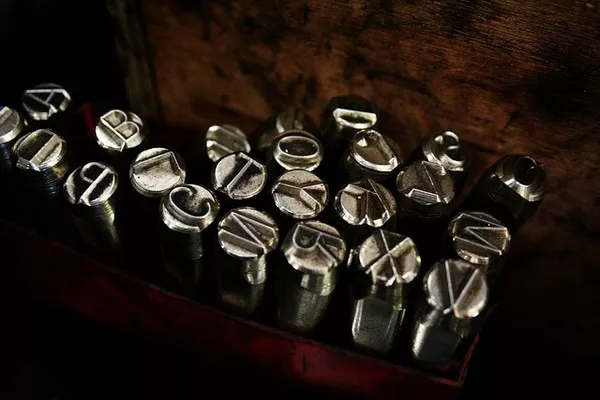Silver has been a prized metal for centuries, utilized in jewelry, currency, utensils, and various decorative objects. Its luster and malleability make it desirable, but these same characteristics also make it a target for counterfeiting. For anyone dealing with silver—whether as an investor, jeweler, or casual buyer—being able to distinguish genuine silver from fakes is crucial. This article will explore various methods to determine the authenticity of silver, providing a thorough guide for anyone looking to verify their silver items.
1. Visual and Physical Inspection
Hallmarks and Stamps
Genuine silver items are typically marked with a hallmark, a small stamped impression that indicates the purity of the silver. Common hallmarks include “925” (indicating 92.5% silver, also known as sterling silver), “900” (90% silver), and “800” (80% silver). These marks can be accompanied by other symbols or letters that indicate the manufacturer or country of origin. It is essential to familiarize oneself with these hallmarks and their variations across different regions and periods.
Magnet Test
Silver, like other precious metals, is not magnetic. Using a small magnet, one can test whether an item is attracted to it. If the silver piece sticks to the magnet, it is either not silver or is alloyed with ferromagnetic materials. However, passing this test alone does not guarantee authenticity since some counterfeits use non-magnetic metals.
Surface Examination
Inspecting the surface of the silver can also provide clues about its authenticity. Real silver tarnishes over time, developing a blackish patina due to exposure to sulfur compounds in the air. This tarnish can be polished away but will recur if the item is genuine silver. In contrast, silver-plated items may show wear where the underlying metal is exposed, especially at high-contact points like edges and corners.
2. Chemical Tests
Nitric Acid Test
The nitric acid test is a reliable method to confirm silver content. When a drop of nitric acid is applied to silver, a creamy white color indicates real silver, while a greenish hue suggests the presence of copper or other metals. This test should be conducted with care, ideally by professionals, as nitric acid is highly corrosive and can damage the item if not handled correctly.
Silver Acid Test Kit
Commercially available silver acid test kits provide a safer and more user-friendly alternative to nitric acid. These kits typically include a testing stone and several solutions for different purity levels. By rubbing the silver item on the stone and applying the acid, the resulting color can be compared against a chart to determine the silver content.
3. Density Test
Silver’s density is higher than that of most common metals. Pure silver has a density of about 10.49 grams per cubic centimeter. To perform a density test, one can weigh the silver item and measure its volume (often done by water displacement). Dividing the mass by the volume yields the density. If the result is close to 10.49 g/cm³, the item is likely silver. This method requires precision in measurement and is best suited for solid silver objects rather than hollow or mixed-material items.
4. Sound and Thermal Conductivity Tests
Ping Test
Silver has a distinctive sound when struck, often described as a clear, ringing tone. The ping test involves gently tapping the silver item with a non-damaging object and listening to the sound it produces. While subjective and not definitive on its own, this test can provide additional confirmation when used in conjunction with other methods.
Thermal Conductivity
Silver is one of the best conductors of heat. A simple thermal conductivity test involves placing an ice cube on the silver item and observing how quickly it melts. Silver will transfer heat to the ice rapidly, causing it to melt faster than on most other metals. Again, this test should be considered supplementary rather than conclusive.
5. X-Ray Fluorescence (XRF) Analysis
For a highly accurate and non-destructive testing method, X-ray fluorescence (XRF) analysis is employed. This technique involves exposing the silver item to X-rays and analyzing the resulting fluorescent light emitted from the metal. The specific wavelengths of light correspond to different elements, allowing precise determination of the metal’s composition. XRF analysis is typically conducted by professionals due to the cost and complexity of the equipment.
6. Ultrasonic Testing
Ultrasonic testing uses high-frequency sound waves to detect inconsistencies within the metal. When ultrasonic waves are passed through a silver item, the way these waves are reflected and transmitted can reveal internal structures and the presence of different materials. This method is especially useful for identifying counterfeit coins or bars that may have a different metal core covered by a thin layer of silver.
7. Comparison with Known Silver Items
One practical approach to verifying silver is by comparing the item in question with a known genuine silver item. This comparison can include visual inspection, weight comparison, and other physical attributes. Having a trusted silver reference on hand can provide immediate clues about the authenticity of a questionable piece.
8. Professional Appraisal
Finally, for high-value items or when in doubt, seeking the expertise of a professional appraiser or jeweler is advisable. Professionals have the experience, tools, and knowledge to accurately determine the authenticity of silver items. They can provide a detailed assessment and certification, which can be crucial for insurance purposes or resale.
See also Where Can I Sell My Silver Bars?
Conclusion
Determining whether silver is genuine requires a combination of methods, as no single test is entirely foolproof. Visual and physical inspections provide the first line of defense, while chemical and density tests offer more definitive answers. Advanced techniques like XRF analysis and ultrasonic testing provide high accuracy, and professional appraisals offer the ultimate assurance. By employing a combination of these methods, one can confidently verify the authenticity of silver items, ensuring their true value and integrity.


